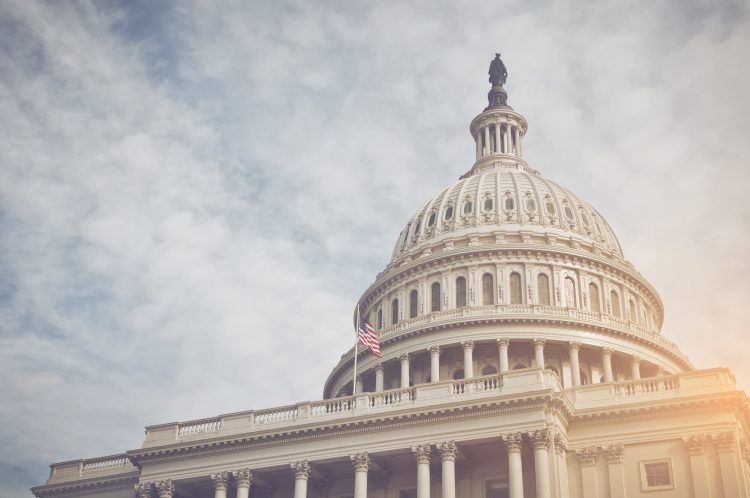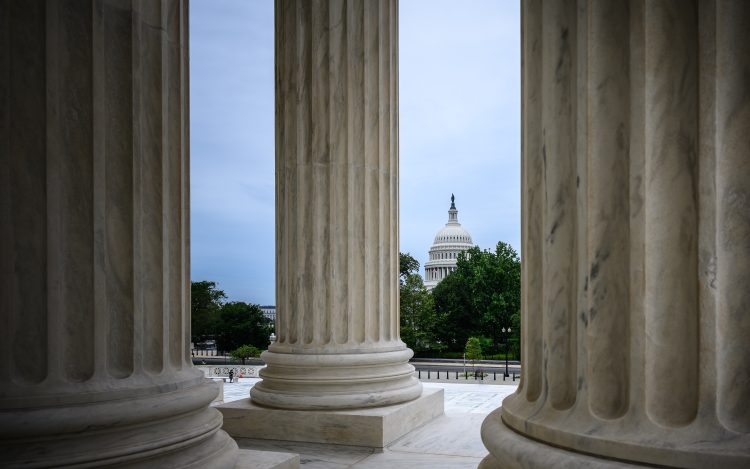This week on Facing the Future we took a step back from the day-to-day budget battles in Washington to consider the overall fiscal outlook. Our guest was Brian Riedl, a senior fellow at the Manhattan Institute, who recently published a comprehensive chart book on federal spending, taxes, and deficits. Among the questions we discussed were: What is driving CBO’s projected $112 trillion deficit over 30 years, and could the deficit top $3 trillion yet again within a decade?
Concord Coalition Policy Director Tori Gorman joined the conversation with Riedl, and in our closing segment Concord Coalition Chief Economist Steve Robinson joined Gorman and me for an update on developments in Washington, including the short-term ($480 billion) bipartisan compromise to lift the debt limit through early December and avoid an immediate crisis.
With major new initiatives now being debated in Congress on everything from child support, Medicare expansion, free community college, and climate change, it is easy to forget that the budget is already on an unsustainable path and has been for many years. Even if all the new initiatives are legitimately paid for — a very big IF — the offsets used for this purpose would no longer be available to help fill the pre-existing budget gap. Riedl walked us through the causes and magnitude of the problem.
“You throw out numbers like $112 trillion in projected deficits over 30 years, that’s such a huge number that it’s almost incomprehensible,” Riedl said.
“People can ask, where does all that borrowing come from? It’s not coming from taxes. Tax revenues are going to continue rising as a percentage of the economy. It’s not going to come from discretionary spending [appropriations]. That’s falling as a percentage of the economy. In fact, most entitlement programs [mandatory spending] are holding steady as a percentage of the economy. So where is all the debt coming from? Mostly from two programs: Social Security and Medicare,” Riedl added.
Riedl explained that these two programs pay out more than they take in from dedicated sources such as payroll taxes and premiums. The shortfall is made up by transferring general government revenues to the programs. Based on projections by the nonpartisan Congressional Budget Office, Riedl calculates that these transfers, plus interest on the added borrowing, would amount to about $35 trillion over 30 years for Social Security and $78 trillion for Medicare.
He added that when viewed as a percentage of the economy, borrowing for Social Security and Medicare over 30 years would amount to 15 percent of GDP.
“When you have two programs running a deficit of 15 percent of GDP, there’s your long-term deficit,” Riedl concluded. “The rest of the budget at that point would be in surplus.”
In our Washington round-up segment, Gorman explained that the deal to lift the debt limit by $480 billion avoids an immediate crisis but adds an element of uncertainty as to when the new limit will be reached. By using a specific number, rather than suspending the debt limit until a specified date, policymakers will need to keep a careful eye on the government’s cash flows.
“We’re not exactly sure when the debt limit is actually going to start to constrain again,” she said, noting estimates that range from late November to sometime in January.
Regarding the economy, Robinson noted that interest rates on 10-year Treasury bills are rising but are still well below inflation. This is likely reflecting a general belief that today’s high inflation is transitory. He noted, however, that “if inflation continues to hold, at some point, the Treasury rates are going to go up and they’re going to be much more substantial than they are now.”
Hear more on Facing the Future. I host the program each week on WKXL, NHTalkRadio.com (N.H.), and it is also available via podcast. Join me and my guests as we discuss issues relating to national fiscal policy with budget experts, industry leaders, and elected officials. Past broadcasts are available here. You can subscribe to the podcast on Spotify, Pandora, iTunes, Google Podcasts, Stitcher, or with an RSS feed. Follow Facing the Future on Facebook, and watch videos from past episodes on The Concord Coalition YouTube channel.
Continue Reading











